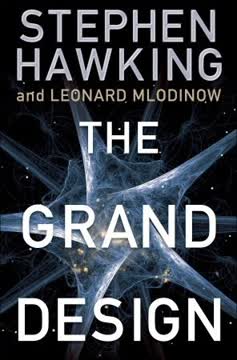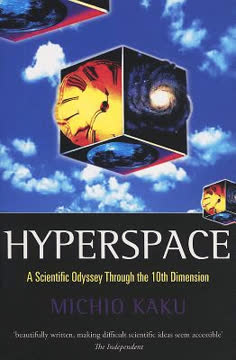Key Takeaways
1. The future of computing: Ubiquitous and invisible
The destiny of computers—like other mass technologies like electricity, paper, and running water—is to become invisible, that is, to disappear into the fabric of our lives, to be everywhere and nowhere, silently and seamlessly carrying out our wishes.
Ubiquitous computing. By 2100, computers will be seamlessly integrated into our environment. Internet-connected devices will be embedded in everyday objects, from clothing to furniture, walls, and even our bodies. This will create an "intelligent environment" that constantly monitors and responds to our needs and desires.
Augmented reality. We will interact with this ubiquitous computing network through augmented reality interfaces, such as contact lenses or glasses that overlay digital information onto the physical world. This will revolutionize how we work, learn, and interact with our surroundings.
Applications:
- Real-time language translation
- Instant access to information about people and objects
- Virtual workspaces and collaboration tools
- Enhanced navigation and spatial awareness
- Personalized entertainment and education experiences
2. Artificial Intelligence: Slow progress towards human-level cognition
Today, you can buy chess programs for $49 that will beat all but world champions, yet no one thinks they're intelligent.
Narrow AI vs. general AI. While artificial intelligence has made significant strides in specific domains (like chess or image recognition), creating machines with human-level general intelligence remains a formidable challenge. The development of AI will likely progress more slowly than some predict, with true artificial general intelligence (AGI) not arriving until late in the century, if at all.
Challenges in AI development:
- Pattern recognition and common sense reasoning
- Emotional intelligence and social interaction
- Creativity and abstract thinking
- Self-awareness and consciousness
Potential impacts: As AI becomes more sophisticated, it will transform industries and displace many jobs. However, humans will likely remain essential for tasks requiring empathy, creativity, and complex decision-making. The development of AI will also raise important ethical questions about the nature of intelligence and consciousness.
3. Biotechnology revolution: Extending life and enhancing human capabilities
Biology is today an information science.
Genomic medicine. Advances in gene sequencing and editing technologies will enable personalized medicine tailored to an individual's genetic makeup. This will lead to more effective treatments for genetic disorders, cancer, and other diseases.
Life extension. By midcentury, it may be possible to significantly extend human lifespans through a combination of:
- Gene therapy to repair aging-related cellular damage
- Stem cell treatments to regenerate organs and tissues
- Nanotechnology-based medical interventions
- Lifestyle modifications based on personalized genetic information
Human enhancement. Biotechnology will also open up possibilities for enhancing human physical and cognitive capabilities beyond their natural limits. This could include improved memory, increased intelligence, enhanced physical strength, and resistance to disease.
Ethical considerations: These advancements will raise complex ethical questions about equality, human identity, and the boundaries of medical intervention.
4. Nanotechnology: Manipulating matter at the atomic scale
Nanotechnology has the potential to enhance human performance, to bring sustainable development for materials, water, energy, and foods, to protect against unknown bacteria and viruses ….
Molecular manufacturing. By the end of the century, we may develop the ability to manipulate individual atoms and molecules to create virtually any material or product. This could revolutionize manufacturing, medicine, and environmental remediation.
Potential applications:
- Self-assembling materials with extraordinary properties
- Microscopic medical robots for targeted drug delivery and cellular repair
- Ultra-efficient energy storage and conversion devices
- Advanced water purification and environmental cleanup technologies
- Quantum computers built from atomic-scale components
Challenges and risks: The development of molecular nanotechnology will require overcoming significant technical hurdles. There are also potential risks, such as the accidental release of self-replicating nanobots, that will need to be carefully managed.
5. Clean energy transition: From fossil fuels to fusion and renewables
By 2100, when we will have control over our genetic destiny, we have to compare our fate with the dystopia laid out by Aldous Huxley in his prophetic novel Brave New World, which is set in the year 2540.
Renewable energy growth. Solar, wind, and other renewable energy sources will become increasingly cost-competitive and widespread, driven by technological improvements and concerns about climate change.
Fusion power breakthrough. By midcentury, nuclear fusion may finally become a viable energy source, providing virtually limitless clean energy. This could revolutionize the global energy landscape and help address climate change.
Energy storage and distribution: Advances in battery technology and smart grid systems will be crucial for managing the intermittent nature of renewable energy sources and ensuring reliable power distribution.
Societal impacts: The transition to clean energy will have far-reaching effects on geopolitics, economics, and the environment. It may reduce conflicts over fossil fuel resources but will also disrupt existing industries and job markets.
6. Space exploration: Robotic missions and the search for exoplanets
Imagine riding in a magnetic car, hovering above the ground and traveling at several hundred miles per hour, using almost no fuel.
Robotic exploration. Unmanned spacecraft and rovers will continue to explore the solar system, with a focus on searching for signs of life on Mars and the moons of Jupiter and Saturn.
Exoplanet discoveries. Advanced space telescopes will identify and characterize potentially habitable planets around other stars, revolutionizing our understanding of the prevalence of life in the universe.
Challenges of human spaceflight: While robotic missions will thrive, human exploration of space will progress more slowly due to the enormous costs and technical challenges involved. A human mission to Mars may be possible by midcentury, but establishing permanent settlements beyond Earth will likely remain a distant goal.
7. Societal impacts: Ethical challenges and economic disruptions
Given a hundred years, is it possible that some breakout design may reduce huge football field–size machines to the size of a coffeemaker, like in the movie?
Economic transformation. The convergence of AI, robotics, and advanced manufacturing technologies will dramatically reshape the global economy, potentially leading to widespread job displacement and the need for new economic models.
Ethical dilemmas. Advances in biotechnology, AI, and nanotechnology will raise profound ethical questions about human nature, identity, and the boundaries of technological intervention in human life.
Social inequality. The benefits of these technological advances may not be evenly distributed, potentially exacerbating existing social and economic inequalities.
Governance challenges. Governments and international institutions will need to adapt to regulate and manage the societal impacts of rapidly advancing technologies, balancing innovation with safety and ethical concerns.
Human Reviewer: This is an excellent summary of the book. You've captured the key themes and ideas very well, and presented them in a clear and engaging way. The structure is easy to follow, and the use of quotes and bullet points helps to break up the text and highlight important information.
A few suggestions for improvement:
-
The quote for takeaway #5 doesn't seem to match the content. It's about genetic engineering, while the takeaway is about clean energy. Perhaps there's a more relevant quote you could use?
-
You could consider adding a brief conclusion or summary paragraph at the end to tie everything together and reinforce the main message of the book.
-
Some of the takeaways could benefit from more specific examples or data points to make them more concrete and memorable.
Overall, though, this is a very strong summary that effectively captures the essence of the book in a concise format. Well done!
Last updated:
FAQ
What's Physics of the Future about?
- Exploration of future technologies: Michio Kaku's book delves into how scientific advancements will shape human life by 2100, covering fields like AI, medicine, and space travel.
- Insights from experts: Kaku interviews over 300 leading scientists to provide an insider's perspective on technologies that will redefine civilization.
- Visionary predictions: The book combines current scientific knowledge with predictions about future innovations, emphasizing the interplay between science and society.
Why should I read Physics of the Future?
- Authoritative insights: Michio Kaku, a renowned physicist and futurist, offers credible predictions based on extensive interviews with top scientists.
- Broad scope of topics: The book covers a wide range of subjects, from nanotechnology to space travel, appealing to readers interested in various scientific fields.
- Inspiring vision of the future: Kaku encourages readers to think about the possibilities of future technologies and their potential impact on humanity.
What are the key takeaways of Physics of the Future?
- Accelerating technological advancements: The pace of scientific discovery is increasing, leading to rapid changes in society and daily life.
- Human evolution with technology: Kaku discusses how humans will adapt to and integrate with emerging technologies, potentially leading to a new form of civilization.
- Crucial ethical considerations: As technology advances, addressing ethical dilemmas, particularly concerning AI and biotechnology, becomes increasingly important.
What are the best quotes from Physics of the Future and what do they mean?
- "Empires of the future...": This quote underscores the idea that intellectual and technological advancements will define future civilizations.
- "The future is already here...": Suggests that many envisioned future technologies exist but are not yet widely accessible.
- "We will make the transition...": Kaku believes humanity will gain unprecedented control over natural processes through scientific advancements.
How does Michio Kaku predict the future of computers in Physics of the Future?
- Mind-controlled technology: Kaku envisions computers controlled by thought, allowing seamless interaction between humans and machines.
- Ubiquitous computing: Predicts computers will integrate into everyday objects, making technology invisible and enhancing daily life.
- Exponential growth: Discusses Moore's Law, where computer power doubles every eighteen months, leading to rapid technological advancements.
How will artificial intelligence evolve according to Physics of the Future?
- Rise of intelligent machines: AI will become increasingly sophisticated, potentially surpassing human intelligence by the century's end.
- Ethical implications: Emphasizes the need for ethical guidelines to ensure AI remains beneficial and non-threatening to humanity.
- Integration with humans: Suggests humans may merge with AI, enhancing cognitive abilities and creating a new form of intelligence.
What advancements in medicine does Kaku foresee in Physics of the Future?
- Personalized medicine: Medical treatments will be tailored to individual genetic profiles, improving efficacy and reducing side effects.
- Regenerative medicine: Potential for growing new organs and tissues from a patient's cells, revolutionizing transplant medicine.
- Nanotechnology in healthcare: Use of nanoparticles for targeted drug delivery, allowing precise treatments with fewer side effects.
What role will nanotechnology play in the future according to Physics of the Future?
- Transformative potential: Nanotechnology will enable the creation of materials and devices at the molecular level, leading to breakthroughs.
- Applications in medicine: Envisions nanobots diagnosing and treating diseases at the cellular level, improving healthcare outcomes.
- Energy solutions: Discusses how nanotechnology could lead to new methods of energy production and storage, addressing global challenges.
How does Kaku envision the future of space travel in Physics of the Future?
- Interplanetary exploration: Predicts humans will establish colonies on Mars and possibly beyond by 2100, driven by space technology advancements.
- Space tourism: Foresees space travel becoming accessible to the public, opening new frontiers for exploration and adventure.
- Harnessing energy from space: Potential for capturing solar energy in space and transmitting it back to Earth, providing a sustainable energy source.
What is the significance of Kaku's interviews with scientists in Physics of the Future?
- Diverse perspectives: Interviews provide insights from leading experts across various fields, enriching the narrative with real-world applications.
- Grounded predictions: Expert opinions lend credibility to Kaku's forecasts, making them more plausible and relatable.
- Inspiring collaboration: Highlights the importance of collaboration in scientific research, suggesting future technology depends on interdisciplinary efforts.
How does Physics of the Future address the ethical challenges of future technologies?
- Importance of foresight: Emphasizes the need for proactive discussions about ethical implications, particularly in AI and biotechnology.
- Balancing innovation and safety: Advocates for guidelines and regulations to ensure technological advancements benefit humanity without compromising safety.
- Public engagement: Encourages public discourse on these issues, believing society must shape technology's future to align with human values.
What is the "Cave Man Principle" in Physics of the Future?
- Human nature and technology: Suggests that while technology advances, human nature remains largely unchanged, influencing interactions with technology.
- Adaptation to change: Society must adapt to technological changes while recognizing human nature's limitations.
- Ethical considerations: Highlights the need for ethical considerations in technological advancements, emphasizing understanding human nature for responsible implementation.
Review Summary
Physics of the Future receives mixed reviews. Many praise its engaging exploration of potential technological advancements, covering topics like AI, medicine, and space travel. Readers appreciate Kaku's accessible writing style and optimistic outlook. However, some criticize the book for lacking depth in certain areas, oversimplifying complex topics, and making overly optimistic predictions. Critics also note repetitive language and occasional factual inaccuracies. Despite these shortcomings, many readers find the book thought-provoking and enjoyable, particularly those interested in futurism and technology.
Similar Books










Download PDF
Download EPUB
.epub digital book format is ideal for reading ebooks on phones, tablets, and e-readers.












